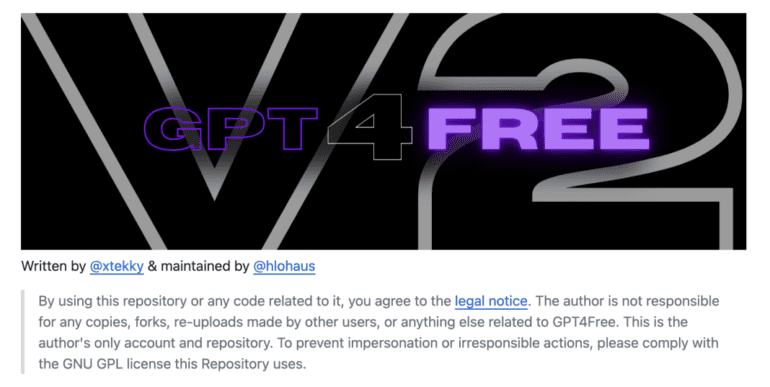TL;DR:
- GPT4Free (G4F) addresses the issue of restricted access to advanced AI models like GPT-4 and GPT-3.5.
- It achieves this by reverse engineering APIs used for paid access, allowing users to interact and study these models more comprehensively.
- G4F has gained significant popularity in the AI community, with a strong presence on GitHub, 473 repositories, 163 contributors, 51k stars, and 12.6k forks.
- The method employed by G4F raises ethical and legal concerns due to circumventing access controls and terms of service.
- Despite the ethical challenges, G4F offers invaluable insights into AI model strengths, weaknesses, and reliability.
Main AI News:
The realm of artificial intelligence has been abuzz with a pressing issue – the limited accessibility to cutting-edge AI models. These powerhouses of conversation, such as GPT-3.5 and GPT-4, born out of OpenAI’s ingenuity, have remained elusive due to the confinements of paywalls and stringent regulations imposed by their proprietors.
As it stands, there are few avenues for unfettered exploration of these AI marvels. Some platforms dangle the promise of a brief trial, yet these trials often impose substantial constraints. Consequently, researchers, developers, and AI enthusiasts find themselves grappling with formidable barriers while attempting to unravel the full potential of these advanced AI models.
Enter GPT4Free, or G4F for short, a groundbreaking artificial intelligence solution poised to surmount this challenge. G4F leverages the art of reverse engineering, ingeniously dissecting the application programming interfaces (APIs) that are typically tethered to paid access. This ingenious approach deceives the systems into believing that the requests originate from authorized sources, effectively granting users the opportunity to engage with and explore these models on a deeper level.
The metrics encapsulating GPT4Free’s impact reverberate throughout the AI community. With a substantial presence on GitHub, G4F stands as a testament to its monumental influence: it finds utility in nearly 473 repositories, garners contributions from 163 talented developers, and boasts an impressive 51k stars and 12.6k forks. These numbers underscore the widespread curiosity and adoption of G4F within the AI ecosystem.
However, it is essential to address the ethical and legal quandaries that accompany this clandestine method. By sidestepping access controls and terms of service, GPT4Free traverses treacherous legal waters. Questions concerning responsible governance, security, and oversight of these influential AI models inevitably arise. Nevertheless, the invaluable insights it offers into the strengths, weaknesses, and dependability of these models demand our attention.
Conclusion:
GPT4Free’s innovative approach to accessing advanced AI models has the potential to disrupt the AI market by democratizing access. However, the ethical and legal implications surrounding its operation necessitate a careful consideration of governance and oversight in the ever-evolving landscape of artificial intelligence.

